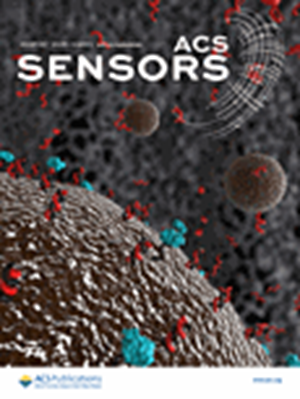A Self-Developed Fire Early Warning System Based on Gas Detection and Graph Convolution Calculation Method
IF 9.1
1区 化学
Q1 CHEMISTRY, ANALYTICAL
引用次数: 0
Abstract
This study develops an artificial olfactory system for the early monitoring of fire risk in electric cabinets. Compared with existing fire detection methods such as temperature, smoke, sound, and current, the detection object of artificial olfactory sensors is abnormal odor, the diffusion of odor does not consider the complex structure of the electrical cabinet, and the detection results do not need to distinguish variable electrical conditions. In the study, we develop an artificial olfactory training device equipped with a sensory data collector to collect odor information from six combustible materials under smoke-free conditions. Based on the designed fast Pearson graph convolutional network (FPGCN), volatile gases from different overheated materials are identified with high performance under different heating times (at 1–350 s, an accuracy of 98.08%, a precision of 98.21%, and a recall of 98.01% are achieved), which proves the feasibility of the artificial olfactory training device.

基于气体检测和图卷积计算方法的火灾预警系统
本研究开发了一种用于电气柜体火灾风险早期监测的人工嗅觉系统。与现有的温度、烟雾、声音、电流等火灾探测方法相比,人工嗅觉传感器的探测对象是异常气味,气味的扩散不考虑电柜的复杂结构,探测结果不需要区分可变的电气条件。在本研究中,我们研制了一种配有感官数据采集器的人工嗅觉训练装置,用于在无烟条件下采集六种可燃材料的气味信息。基于设计的快速皮尔逊图卷积网络(FPGCN),在不同的加热时间下,对不同过热材料的挥发性气体进行了高性能的识别(在1-350 s,准确率为98.08%,精度为98.21%,召回率为98.01%),证明了人工嗅觉训练装置的可行性。
本文章由计算机程序翻译,如有差异,请以英文原文为准。
求助全文
约1分钟内获得全文
求助全文
来源期刊

ACS Sensors
Chemical Engineering-Bioengineering
CiteScore
14.50
自引率
3.40%
发文量
372
期刊介绍:
ACS Sensors is a peer-reviewed research journal that focuses on the dissemination of new and original knowledge in the field of sensor science, particularly those that selectively sense chemical or biological species or processes. The journal covers a broad range of topics, including but not limited to biosensors, chemical sensors, gas sensors, intracellular sensors, single molecule sensors, cell chips, and microfluidic devices. It aims to publish articles that address conceptual advances in sensing technology applicable to various types of analytes or application papers that report on the use of existing sensing concepts in new ways or for new analytes.
 求助内容:
求助内容: 应助结果提醒方式:
应助结果提醒方式:


